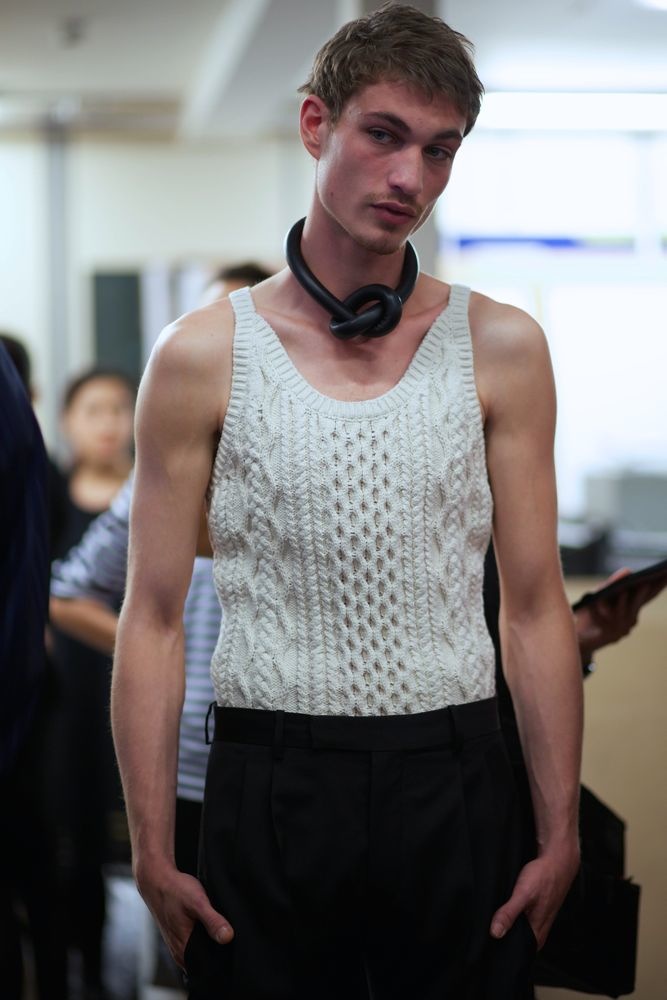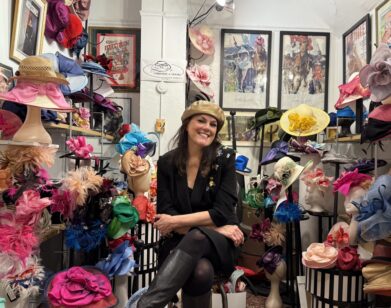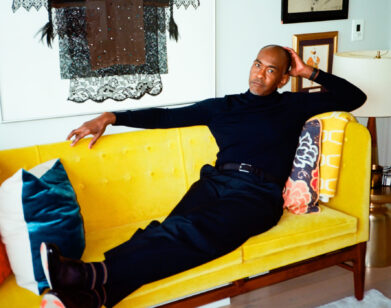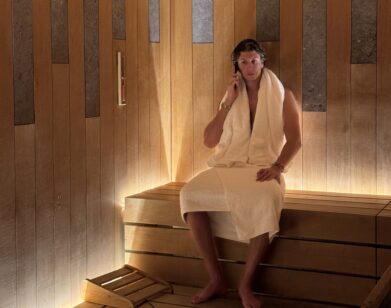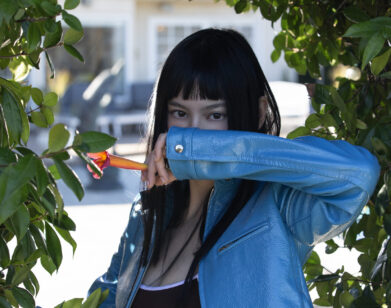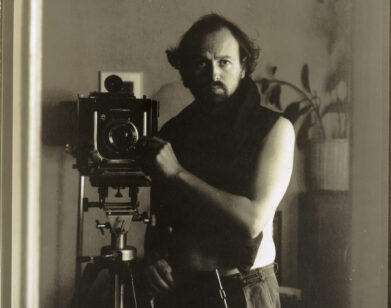London’s Boyhood
The men’s collections that show in London have gained a reputation for being youthful—be it in their irreverence for gender norms, their party-animal color palettes, or their fixation on sportswear. (London Collections: Men is itself a pretty young program, having just wrapped up its fifth season on Wednesday.)
This week, though, a lot of designers on the LC:M schedule seemed interested in a different sort of youthfulness: something clean, simple, calm, and maybe even naïve. The first looks out at J.W. Anderson, a set of boxy intarsia knit tops, evoked the pages of a coloring book. The designs stitched into them came courtesy of British artist John Allen, whose textile work explores his own childhood fascination with landscapes. After those, Anderson sent out some of the most uncomplicated pieces he’s ever shown: striped polos with striped lounge pants; a matching cream-colored jacket and sweater over plain black trousers; and a series of long-sleeve color-blocked tops that looked like abstracted baseball jerseys. Awkwardness and eccentricity were still in the mix, but not in an overeager way. There were very feminine tops that Anderson had tied around his models’ arms and hips like silk scarves, but even their transgressiveness felt like an innocent accident in the way they lazily exposed shoulders and waists. If they were indecent, they didn’t know it, or particularly care. Anderson called it a “sleepy eroticism.” It was this brand of subversiveness—quiet, calm, and unaffectedly cool—that seemed to keep cropping up throughout the week.
Agi & Sam, historically some of the city’s most prolific creators of busy patterns and prints, also found a surprisingly clean slate this season. Their collection focused mostly on solids in white, camel, navy, and royal blue (with, of course, a few prints, but even they were monochrome and relatively simple). “Clarity, ease, and an undercurrent of suppressed angst” were among their talking points for the day, specifically “the angst of teenage rebellion, conformity, and uniformity.” These ideas took shape in a range of oversize suits, billowy board shorts, and, as at Anderson, a few matching sets of boyish short-sleeve shirts and trousers. They showed several skirts, too, but didn’t play them up for shock value: tucked under overcoats and aprons, they suggested the same sort of understated gender insurgency that Anderson got at in his collection. Christopher Shannon also honed in on vaguely androgynous teenage angst at his show on Sunday, claiming an emo kid’s bedroom as his starting point. This brought him to a similar place as Anderson and Agi & Sam: there were more matching shirt-and-short sets, more youthfully oversized proportions, more monochromatism. Shannon played the angst angle more acutely, showing DIY cutouts and magazine-y collages plastered onto parkas and sweatpants. But simplicity—a sort of sartorial resignation (or, alternatively, repression)—still ruled.
Even London’s resident minimalists, Lou Dalton and Lee Roach, had found ways to scale back further. Dalton said that for her this season was all about control, and the collection she showed was her most elementary yet. In soft pink, pewter, baby blue and navy, she showed baseball-style button-up tops and athletic-looking bombers. Mid-length shorts gave the lineup an extra sporty, juvenile feel. Clean-cut hoodies, zip-front jackets, and strap-closure blazers gave the same utilitarian impression at Lee Roach, but a palette of black and army green gave his clothes a moodier, brooding quality. There was more head-to-toe matching—it suggested a pointed disinterest in anything but the simplest, most sensible clothes (thankfully just shy of normcore).
One of the biggest harbingers of this subversive new easiness in the air came at Tom Ford. The suiting maven showed no formalwear at his presentation, and announced his first-ever line of jeans. “People don’t actually see this other side of me,” Ford explained. “It really exists more in New Mexico and when I’m not working than it does in urban London.” Jeans as subversive? When they take over a traditionally black-tie showroom, yes. (Ford joked that they offended the capital-F Fashion sensibilities of at least one person on his team.) The collection as a whole told a relatively quiet color story in beiges, blues, and browns. It came with an extensive offering of suede and leather jackets, plus swim shorts, chambray shirts, and straight-fit denim. “I hate the word casual,” Ford told us, searching, to no avail, for a more fitting word. “It’s not casual.” But it was refreshingly laid-back.
Denim was more prominent than usual at Burberry Prorsum as well. The show, which was staged in perfectly sunny weather on a private lawn in Kensington Gardens, took its inspiration from the intrepid attitude of English travel writer Bruce Chatwin. It was one of the most colorful collections of the week, but Christopher Bailey kept things simple by organizing each look around one central hue (eggplant, shamrock, marigold, blood red, to name a few). Each of them were fitted with a matching floppy hat and satchel, the ultimate nomad’s accessories. The clothes were young in a carefree, cool, and rosy way; the colors were bold but not abrasive, the tailoring was relaxed, and the monochromatic styling, like at other shows on the schedule, gave the whole outing a certain insouciance.
Topman, too, ploughed the adventurous spirit of the past for inspiration. Titled “Seventies Nineties,” their collection took psychedelia and filtered it through washed-out grunge. They seemed to have gotten the monochrome memo that circulated for this season; their opening looks were a lovely study in black, white, and yellow knits. Soon enough, that gave way to a more psychotropic explosion of fabrics (denim, Lurex, jersey) and colors (red, blue, periwinkle, purple, seafoam, olive). Leisurely shirt-and-short sets made yet another appearance (here, in the craziest patterns yet), and sport jackets that closed like bath robes made the eveningwear feel very easy. All in all, though, this came out as one of the most archetypically London menswear shows on the LC:M program.
Christopher Kane seemed blissfully disconnected from the pared down tendencies of his peers; his collection was quintessential Kane. If anyone came to London looking for their fix of digital patterns, tech-y fabrics and concentrated bursts of neon, his Spring presentation should have sated them several times over.

